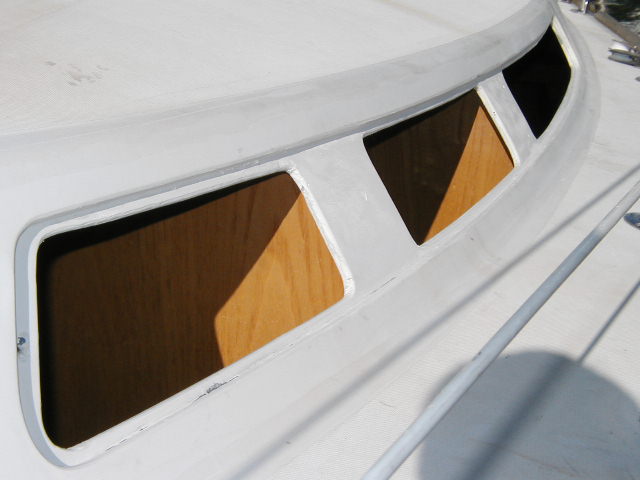Cruising Sailors Forum Archive
I do think the "flexible" chisel sort of bent onto the fiberglass surface would work best for protecting the fiberglass. It would, however, want a bit of checking "in an inconspicuous place" to be sure. The "rigid" blade simply lays flat on the surface. I used it on the hull wood, plywood, as it is soft and I felt the "flexible" blade would dig in.
Cleaning up the caulk still left on your fiberglass hull isn't that hard with the new caulk removers in my experience. It IS tedious still however and wants some patience. Caulk removers for the most part only take off the surface a bit as you go and must be reapplied often to get it all, so to speak.
A tool I have used with great success for the end game of caulk removal from fiberglass is an eight dollar jobbie bought in paint sections of hardware stores. It's a brown "scrubbie pad" type of material on a mandrel which chucks into your drill motor. With a light touch it will take off caulk residue but not your gelcoat..unless you get carried away. ![]() Then you go back and buff out your hull and done.
Then you go back and buff out your hull and done.
In the pic that is exactly what I did on this seven foot long set of windows on my old Freedom 25. They leaked, and clearly had leaked for some time, in several places. Folks kept adding on more silicone to no avail...even silicone doesn't like to adhere to silicone.
I didn't have my Dremel tool for this job so used a sharp 2" chisel for a scraper, caulk remover, and the scrubbie pad in my drill motor. Having edges to work up to with the Dremel might be problematic, only the user will know.
Be advised the Dremel heats up to quite warm right in your hand. It hasn't affected the work but may affect the longevity of the 100 dollar tool. If you can pay three to four times as much, the Fein is a superior tool. For my little amounts of work, I opted for the lesser evil of a heating up Dremel.

Messages In This Thread
- Caulk removal made easier.....used the Dremel version of the Fein type tool.

- P.S. I used SS wire with 1" dowel handles each end and a wedge to remove the rubrail..pretty simple.


- Thanks, That's a pretty cool tool. If
- I bought one last summer
- I've no doubt the Dremel would remove the gross amount off fiberglass easily.......

- Did anyone read this tool comparison ...

- I got the Dremel last year for Christmas
- P.S. I used SS wire with 1" dowel handles each end and a wedge to remove the rubrail..pretty simple.